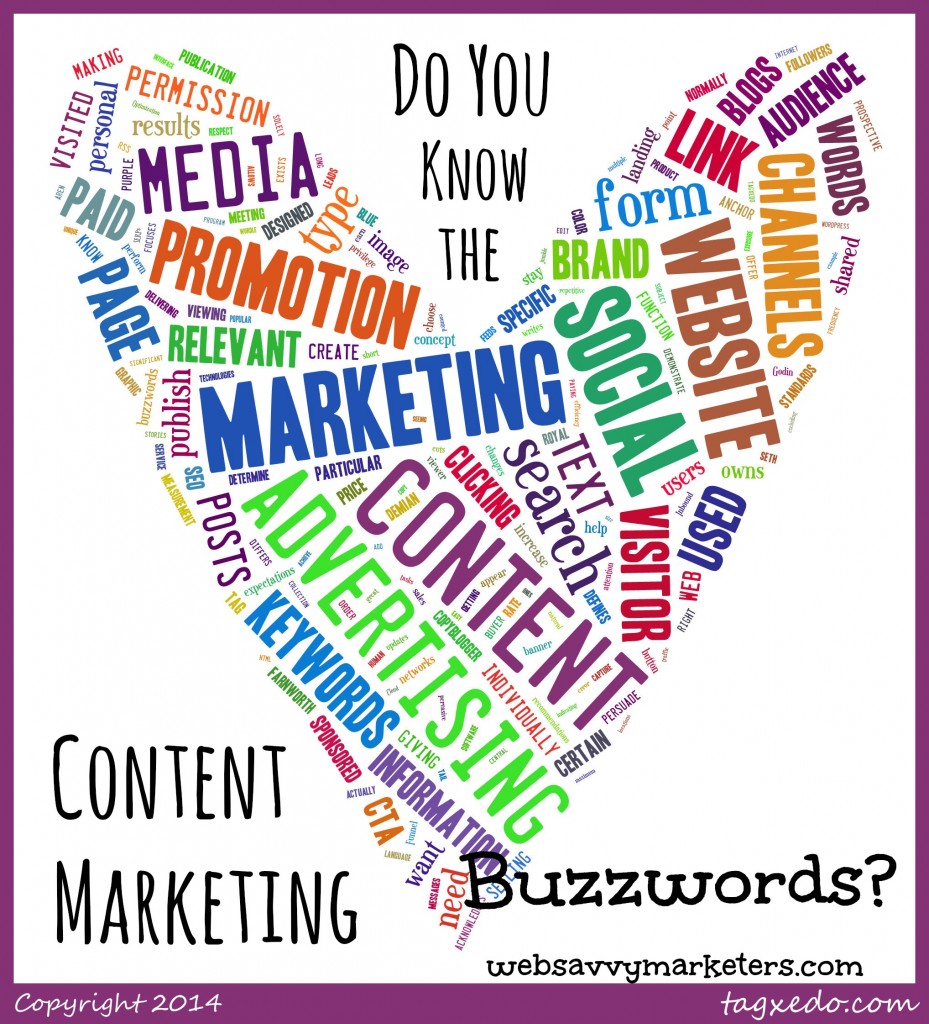 Content Marketing isn’t about selling. It’s about giving your audience information they need and want without a price tag.
Content Marketing isn’t about selling. It’s about giving your audience information they need and want without a price tag.
To help you stay in the know on this important concept, I’ve rounded up the most-used content marketing buzzwords.
Native Advertising
A type of paid advertising that matches the form and function of the content that the user is viewing.
Or, as Demian Farnworth defines it in a Copyblogger article, “Native advertising is paid content that matches a publication’s editorial standards while meeting the audience’s expectations.”
Owned Media
A channel that a publisher or brand owns and where they can publish whatever content they choose, such as a blog or website.
Shared Media
Content that is promoted and shared on social networks by a brand’s followers.
Anchor Text
The readable text that you see which provides a link to another page. It’s normally a royal blue color and changes to purple once you’ve visited the link.
Call-to-Action (CTA)
Words that persuade a viewer to perform a specific action. Appears in the form of a link, button, banner, or some type of graphic or text.
Click Through Rate (CTR)
A measurement used for CTAs and emails to determine how many clicks received by a link, image, or anything that leads to a web page, landing page, or offer.
Top of the Funnel
The point in the sales process where a prospective buyer acknowledges a need for more information on a certain product or service.
Permission Marketing
Seth Godin writes “Permission marketing is the privilege (not the right) of delivering anticipated, personal and relevant messages to people who actually want to get them.”
In order to earn the attention of your audience, you need to demonstrate respect. There are no short cuts to permission marketing.
Content Promotion
The type of content promotion through channels that are controlled by the brand, such as social media posts, RSS feeds, and personalized email.
Content Distribution
Differs from content promotion in that it’s the paid form that’s disributed on channels the brand does not own, such as sponsored articles, social updates, and recommendations.
Inbound Marketing
A type of marketing that focuses on getting found by new visitors through blogs, websites, social media, SEO, whitepapers or other content marketing forms.
Landing Page
A web page where visitors end up after clicking on an advertisement or CTA and exists solely to capture visitor information.
Long-Tail Keywords
Specific keywords that aren’t searched for as often individually, but when combined, they have a higher search ranking. Are growing in use as natural language search becomes more popular and pervasive.
Marketing Automation
Software and technologies that are designed to automate repetitive marketing tasks on multiple channels, such as email, social media, website blogs, etc. It allows for great efficiency and less human error, but may result in less personal engagement.
Content Management System (CMS)
A program that makes it easy to add, edit, and publish content on a website from a central interface. WordPress is an example of a CMS where users create and manage HTML content.
Unique Visitor
An individual visitor to your website who is counted once although they could have visited more often.
Search Engine Marketing (SEM)
A form of internet marketing where you promote your website to achieve maximum exposure and traffic. A combination of paid advertising and SEO (through website design, copy, and keywords) is used to to increase search engine results (SERPs).
Search Engine Optimization (SEO)
The process of making your website more relevant to get higher ranking in search results for a particular keyword or combination of keywords.
Social Advertising
Advertising on social media channels by paying for sponsored posts, stories, or promoted links.
Social Targeting
Targeting your advertisements to certain groups or excluding other groups or locations from seeing your posts to increase the relevance of your posts on social media.
Word Cloud
A collection of significant keywords from a particular text or subject to show which ones are the most relevant. It can be an image or a jumble of words with the size of each word indicating its frequency or importance. Wordle or Tagxedo will create one for you.
If you have an addition to this growing list, please leave it in the comments.